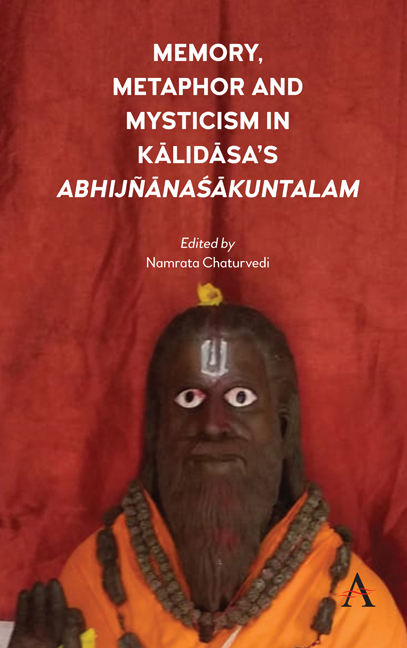Chapter 6 - AbhijñānaŚākuntalam in Indian Hermeneutics
Published online by Cambridge University Press: 23 February 2022
Summary
A classic is defined by its ability to transcend thebarriers of time and space. It unfolds multiplereadings and provides scope for manifold voices.Literary criticism, operating through diversegenres, plays a positive role for sustenance andcultivation of these readings and voices. In thetradition of Sanskrit criticism, several genres –namely sūtra, vṛtti, paddhati, bhāṣya, samīkṣā, cūrṇi, tīkā, pañjikā, kārikā and vārtika – were developed for readingliterary or philosophical texts. A bhāṣya provides newinterpretations, takes note of the diverseviewpoints and offers their critique. Vṛtti provides a summarywith explanatory notes, while paddhati involves additional comments onthe original with its vṛtti. Samīkṣā examines even the deepstructures of a bhāṣya, incorporating subsidiarymeanings. Tīkā is anexposure of the text through a number of techniques.Pañjikā iscomprised of notes on difficult terms or words. Akārikā exploresthe meaning, a vārtika examines the text from theexpress point of view of what is stated (ukta), what is not stated(anukta) and whathas been restated, or poorly stated (durukta), in a text (uktānuktadrukta-cintakatvamvārttikatvam).
The ṭīkā (commentary)has been the most popular among these. Effectivetools for critical analysis or exploration of deepstructures of a text were adopted or devised throughthe ṭīkās. Among theauthors of classical Sanskrit literature, Kālidāsa'sworks have elicited the maximum number ofcommentaries. His AbhijñānaŚākuntalam has been exploredwith a wide range of interpretations in its ṭikās. We get references toas many as 26 ṭīkāson this play, which were written between the twelfthand nineteenth centuries.
In this chapter, I propose to explore some facets ofKālidāsa's AbhijñānaŚākuntalaṃ as gleaned fromits select commentaries. Each one of thecommentators like Rāghavabhaṭṭa (around 1475– 1500CE), Śaṅkaramiśra (around fifteenth century CE), orthe anonymous author of AbhijñānaŚākuntalacarcā (fifteenthcentury CE), Kāṭayavema (fifteenth century CE),Abhirāma (sixteenth century CE) and, lastly,Śrīnivāsa (around nineteenth century CE) has his ownperspective and criteria for evaluating Kālidāsa'splay. They examine the text from diverse angles –namely, the sources of the poet and his innovations,characterizations, the theme, deep structures andinner voices, diction and structural designs,internal and external landscapes and so on.
- Type
- Chapter
- Information
- Memory, Metaphor and Mysticism in Kalidasas AbhijñnaŚkuntalam , pp. 121 - 136Publisher: Anthem PressPrint publication year: 2020

